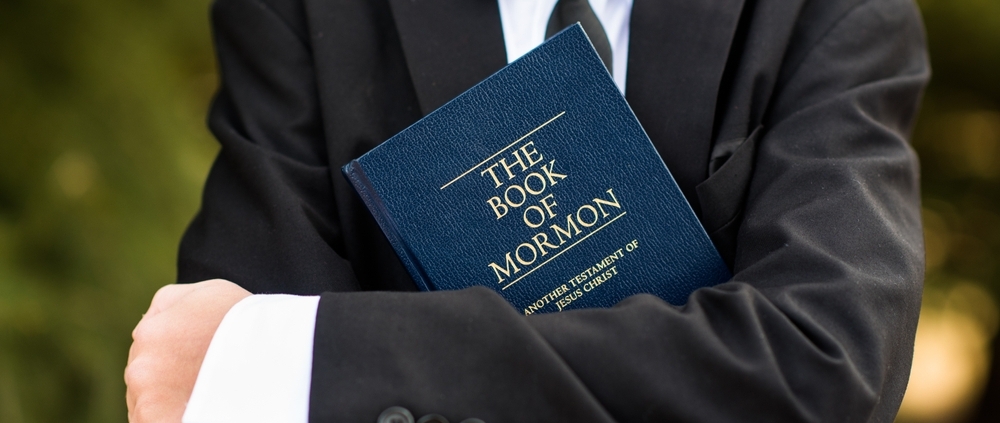Brigham Young: Founder of Mormonism’s Expansion and Controversial Legacy
By Esther Claudette Gittens
Brigham Young, the second president of The Church of Jesus Christ of Latter-day Saints (LDS Church) and a pivotal figure in its history, remains one of the most polarizing leaders in American religious and political history. While revered by many within the LDS Church for his leadership during the westward migration and settlement of Utah, his legacy is marred by allegations of crimes against humanity, racist ideologies, and authoritarian rule. This article examines Young’s controversial actions, his refusal to acknowledge or repent for his misdeeds, and the lasting impact of his leadership on Mormonism and American history.
- Early Leadership and Foundation of Power
After the assassination of LDS Church founder Joseph Smith in 1844, Brigham Young emerged as Smith’s successor. He led the Mormon pioneers to the Salt Lake Valley in 1847, establishing a theocratic government that merged religious and political authority under his control. His leadership was instrumental in consolidating Mormon power in the American West, but it also laid the groundwork for oppressive policies that disproportionately harmed marginalized groups.
Consolidation of Theocracy
Young’s governance was marked by strict authoritarian control. He declared himself the political and spiritual leader of the Utah Territory, a role he wielded to suppress dissent and enforce obedience. Critics who opposed his leadership faced social ostracism, excommunication, or worse.
Citation: Bigler, David L. Forgotten Kingdom: The Mormon Theocracy in the American West, 1847–1896. Utah State University Press, 1998.
- Crimes Against Native Americans
Brigham Young’s policies toward Native Americans were rooted in colonialism and racial supremacy. While he occasionally called for peaceful relations, his actions often contradicted his rhetoric, resulting in violence, displacement, and cultural destruction.
Theft of Land and Resources
Young justified Mormon settlement on Native lands by framing it as a divine mandate. The establishment of farms and settlements in Utah and surrounding territories displaced Indigenous communities, disrupting their traditional ways of life.
Violent Campaigns Against Tribes
Young’s directive to “subdue” Native Americans led to military campaigns against tribes deemed hostile to Mormon expansion. The Bear River Massacre of 1863, in which over 200 Shoshone men, women, and children were killed by U.S. soldiers with Mormon support, exemplifies the brutality of these campaigns.
Citation: Brooks, Juanita. The Mountain Meadows Massacre. University of Oklahoma Press, 1950.
- The Mountain Meadows Massacre
Perhaps the most infamous atrocity associated with Brigham Young’s leadership is the Mountain Meadows Massacre of 1857. This horrific event involved the slaughter of approximately 120 emigrants, including women and children, by a group of Mormon militia members and their Paiute allies.
Young’s Role and Responsibility
- While Young denied direct involvement, evidence suggests that his fiery rhetoric against outsiders and perceived enemies of Mormonism contributed to the massacre.
- The emigrant group, traveling from Arkansas to California, was accused of being part of an anti-Mormon conspiracy, inflaming tensions in the already volatile Utah Territory.
Young’s failure to hold the perpetrators accountable and his attempts to deflect blame onto Native Americans highlight his lack of repentance or moral accountability for this atrocity.
Citation: Bagley, Will. Blood of the Prophets: Brigham Young and the Massacre at Mountain Meadows. University of Oklahoma Press, 2002.
- Racism and Discriminatory Doctrines
Brigham Young’s leadership institutionalized racist ideologies that continue to haunt the LDS Church.
The Curse of Cain Doctrine
Young declared that Black people were descendants of Cain and therefore divinely cursed with inferiority. Under his leadership, Black men were barred from holding the priesthood, a policy that persisted until 1978.
“Any man having one drop of the seed of Cain in him…cannot hold the priesthood.” — Brigham Young, Journal of Discourses, Vol. 7
This racist doctrine extended to denying Black members access to temple ordinances, effectively excluding them from the highest spiritual blessings in Mormon theology.
Genocidal Rhetoric
Young expressed openly genocidal views about Black people, at one point stating that interracial marriage was punishable by death. His rhetoric legitimized systemic racism within the Mormon community and broader Utah society.
Citation: Reeve, W. Paul. Religion of a Different Color: Race and the Mormon Struggle for Whiteness. Oxford University Press, 2015.
- Polygamy and Exploitation of Women
Young was one of the most prominent practitioners and defenders of polygamy, marrying at least 55 women and fathering 56 children.
Polygamy as a Tool of Control
Young’s implementation of polygamy was deeply patriarchal, reducing women to roles of subservience and economic dependency. His teachings justified polygamy as essential for salvation, pressuring women into marital arrangements that often lacked consent.
Impact on Women’s Rights
Polygamy under Young’s leadership suppressed women’s autonomy and perpetuated gender inequality. Critics within and outside the LDS Church condemned the practice as exploitative and harmful.
Citation: Derr, Jill Mulvay, et al. Women of Covenant: The Story of Relief Society. Deseret Book, 1992.
- Young’s Lack of Repentance and Accountability
Brigham Young rarely, if ever, expressed remorse for his actions or the consequences of his policies.
Deflection of Blame
Young often justified violent acts, such as the Mountain Meadows Massacre, as necessary or divinely sanctioned. He consistently shifted responsibility to others, including Native Americans or dissenters within the Mormon community.
Legacy of Unrepentance
Young’s refusal to confront the moral implications of his actions has left a lasting stain on his legacy. The LDS Church has yet to fully reckon with or repudiate many of the doctrines and practices he established.
Citation: Turner, John G. Brigham Young: Pioneer Prophet. Harvard University Press, 2012.
- Perpetuation of Authoritarian Rule
Young’s leadership style set a precedent for authoritarian governance within the LDS Church. His consolidation of power marginalized dissenting voices and established a culture of unquestioning obedience to Church authorities.
Citation: Quinn, D. Michael. The Mormon Hierarchy: Extensions of Power. Signature Books, 1997.
- Cultural Erasure and Assimilation Policies
Young’s policies aimed to assimilate Indigenous peoples into Mormon culture, often at the expense of their traditional identities. These policies mirrored broader colonial practices of cultural erasure in 19th-century America.
Citation: Brooks, Joanna. Mormonism and White Supremacy: American Religion and the Problem of Racial Innocence. Oxford University Press, 2020.
Conclusion
Brigham Young’s legacy is a mixture of religious leadership and human rights violations. While he is celebrated for guiding the Mormon pioneers and establishing Utah, his policies and actions reveal a dark side characterized by racism, authoritarianism, and violence. His refusal to acknowledge or repent for these actions underscores the moral shortcomings of his leadership.
Understanding Young’s history is essential for contextualizing the ongoing struggles within the LDS Church to reconcile its past with its modern values. By confronting this legacy, members and critics alike can better assess the true impact of his leadership.
Citations:
- Turner, John G. Brigham Young: Pioneer Prophet. Harvard University Press, 2012.
- Bagley, Will. Blood of the Prophets: Brigham Young and the Massacre at Mountain Meadows. University of Oklahoma Press, 2002.
- Reeve, W. Paul. Religion of a Different Color: Race and the Mormon Struggle for Whiteness. Oxford University Press, 2015.
- Brooks, Joanna. Mormonism and White Supremacy: American Religion and the Problem of Racial Innocence. Oxford University Press, 2020.
- Bigler, David L. Forgotten Kingdom: The Mormon Theocracy in the American West, 1847–1896. Utah State University Press, 1998.




Leave a Reply
Want to join the discussion?Feel free to contribute!